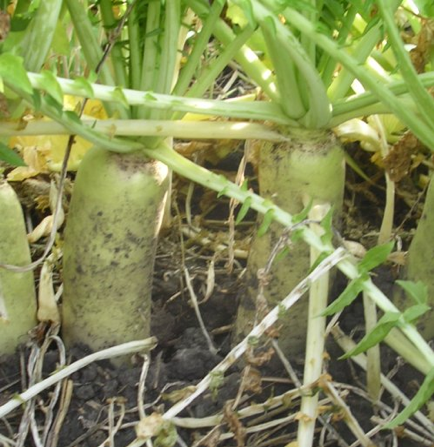
Figure 1: Typical above ground growth of the storage root after 60 days. Photo credit: Joel Gruver, Western Illinois University.
The deep roots of radishes, and the voids that winterkilled and decayed radishes create, have led some farmers to “bio strip-till” with the popular cover crop, says a recent report by several university experts.
The radish attribute that has captured the most farmer interest is their robust rooting ability, according to researchers Joel Gruver, Western Illinois University; Ray Weil, University of Maryland; Charles White, Penn State University, and Yvonne Lawley, University of Manitoba.
Under favorable growing conditions, radish roots can extend more than 3 feet deep in 60 days, with the thickened storage portion of the root extending more than 12 inches. Plants with roots more than 1 inch in diameter normally have a significant portion of the root exposed above ground (often more than 4 inches, even in uncompacted soils) (Fig. 1).
After radishes winter kill and their large fleshy roots desiccate, the channels created by the roots tend to remain open at the soil surface, improving infiltration, surface drainage, and soil warming (Fig. 2).
Radish rooting effects on soil porosity also extend into the subsoil. This general process called bio-drilling, can improve root growth by subsequent crops and access to subsoil moisture resulting in greater resilience under drought conditions.
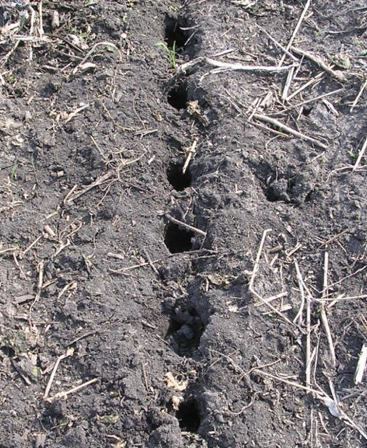
Figure 2. Radish holes after winter kill. Photo credit: Joel Gruver, Western Illinois University.
Research at the University of Maryland has shown that radish roots have greater ability to penetrate compacted soil than cereal rye and rapeseed. Subsequent research found twice as many corn roots penetrated compacted subsoil after radish cover cropping as compared to cereal rye, with both cover crops promoting more rooting than bare-fallow (Fig. 3). These results suggest radishes may be useful as a biological alternative to deep ripping and other mechanical methods of alleviating soil compaction.
Some farmers and researchers are currently evaluating bio strip-till strategies, which involve targeted fall planting of radishes on the wide rows, e.g., 30 inches, where a subsequent cash crop will be planted the next spring. This approach reduces seed cost and may maximize crop utilization of radish-root channels, but this requires precise equipment guidance in the field.
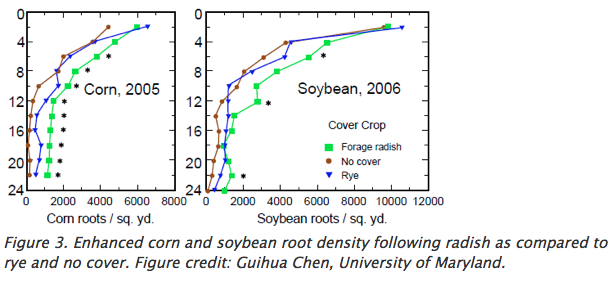
Radish Impacts Erosion
Radishes grow rapidly when planted in late summer or early fall and 10 pounds per acre drilled on 7.5-inch rows can provide full canopy closure in about 3 weeks. This canopy intercepts raindrops minimizing surface impact and detachment of soil particles.
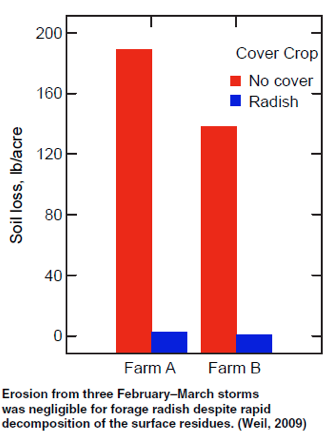
Figure 8. Impact of radish on soil loss. Figure credit: Ray Weil, University of Maryland.
Even after radishes are killed by a hard freeze, a layer of decomposing residue remains on the soil surface throughout the winter and into the early spring, providing erosion control. In addition, runoff and sediment transport are reduced because of the rapid infiltration facilitated by open root holes.
These holes can capture run-off and sediment before it leaves the field. For more complete protection against erosion, radish can be mixed with other cover crops that are winter hardy, e.g., cereal rye, or winter kill but leave more persistent residue cover, e.g., oats.
Seeding Radishes
Good stands of radishes can be established by drilling 6–10 pounds per acre or broadcasting at 8-12 pounds per acre. When using a drill, seed should be placed about 1 inch deep. When broadcasting, establishment is enhanced by culti-packing or light tillage.
There is growing interest in planting radishes on wider row spacing (Fig. 10), often in combination with other cover crop species. This can be accomplished by blocking off rows in a drill or using a planter with appropriate plates or another seed metering system appropriate for radish seed.
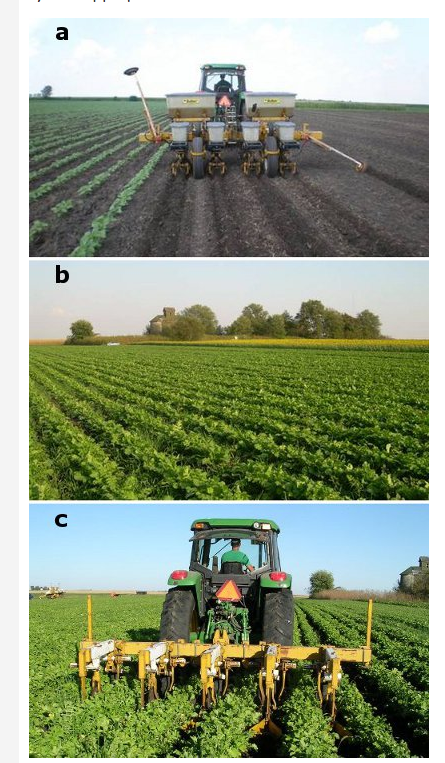
Figure 10. Radish planted on 30-inch rows at the Western Illinois University Organic research farm in Roseville, IL. (a) Planting radishes on 30-inch rows with a Buffalo planter. (b) Radish planted on 30-inch rows with some volunteer spring wheat. (c) Cultivation may be needed to control weeds in radishes planted on 30-inch rows without a companion species. Photo credits: Joel Gruver, Western Illinois University.
Establishing radishes with a planter has particular appeal because many farmers have wider planters than drills, seed spacing is more controlled than with a drill and lower seeding rates can be used. Specific planter plate recommendations are summarized in the following table (Table 1).
Radishes germinate rapidly, emerging within 3–4 days when environmental conditions are favorable. Seed broadcast on the surface can establish well if seeding is followed by a timely rain or irrigation.
Table 1. Recommended planter plates for cover crop radish.
Planter Plate White 60-cell sugar beet
Deere small sugar beet 4/64 inch
Case-IH sugar beet
Kinze 2000 and 3000 series small 60-cell milo
Kinze Edge Vac w/ e-sets 60-cell small sugar beet 1/16 inch
Monosem 6020 plate; vacuum set to 15
Radishes have a very flexible and aggressive growth habit and will spread out in a rosette to fill available space. Radish plants (roots and shoots) grow much larger at lower plant densities, but it's not clear that giant specimens (e.g., greater than 3-inch diameter roots) have any advantage over good stands of radishes with 1-inch-diameter roots (Fig. 11).
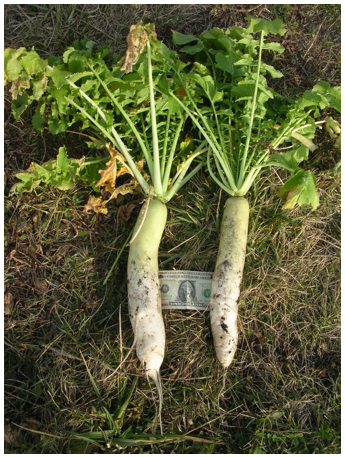
Figure 11. Typical radishes after about 60 days of growth with abundant water and nutrients—much larger radishes are possible but have more value at the county fair than in your fields. Photo credit: Joel Gruver, Western Illinois University.
Radishes grow best when planted early enough to allow 6 weeks of growth before regular frosts. Later-planted radishes tend to be more cold-hardy and less likely to winter kill. When planted in the spring, most radishes bolt quickly producing much less root and shoot biomass than fall plantings.
Winter Hardiness
Radishes are tolerant of light frosts, but generally show injury when temperatures fall below the mid-20s F.
In regions where winter temperatures regularly drop below 20 F, radishes normally winter kill, but overwintering was reported at some northern locations in 2010 and 2012, likely due to early and persistent snow cover and unusually mild winter conditions, respectively.
Young radishes in the rosette growth stage are more winter hardy than radishes that have developed a sizable storage root.
Crop Rotations
Radishes fit well following small grains, corn silage, and early harvested vegetable crops, e.g., sweet corn, that allows cover crop planting before Sept. 1. Later plantings can scavenge significant amounts of nitrogen, but may accomplish little bio-drilling or weed suppression. Nutrients scavenged by radishes are released rapidly making radishes a good fit ahead of early planted crops with high nutrient requirements. Caution should be taken when adding radishes to rotations that already include brassicas.
Cover Crop Mixtures
Many farmers and researchers are experimenting with cover crop mixtures that combine radish with other cover crops that fix nitrogen, provide more persistent residues or simply have cheaper seed. As a general rule, radish rates should be cut by at least 50% when included in cover crop mixtures because of their capacity to out-compete other species.
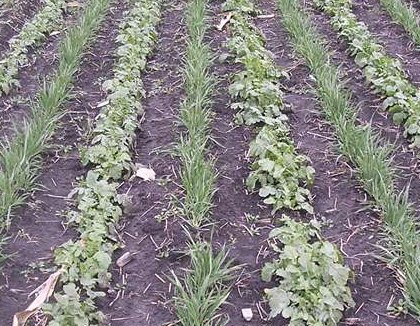
Figure 12. Alternating 15-inch rows of radish and oats. Photo credit: Joel Gruver, Western Illinois University.
An alternative method of managing radish competition in mixtures is to plant separate rows of radishes and companion species (Fig. 12). This can be accomplished by blocking off or compartmentalizing the rows in the seed boxes of a grain drill or by attaching an additional seed metering/distribution system, e.g., Valmar airflo or Gandy Orbit-air.
In addition, some farmers are using split-row planters to plant alternating rows of radish and companion species on 15-inch spacing or planting twice on 30-inch rows with a 15-inch offset using GPS guidance.
Potential Problems
Radishes have little tolerance of wet soils, so planting in fields that collect standing water or are prone to prolonged wetness should be avoided. Enhanced growth directly over tile lines is common and plugging of tile lines has been reported but appears to be a rare occurrence.
Radishes are very responsive to nitrogen, and nitrogen deficiency limits their ability to compete with weeds, grow through compacted soil, and perform other potential functions. Nitrogen deficiencies have been observed when planting after silage- or grain corn on sandy soils or on soils that do not have a history of manure application. Nitrogen deficiencies are also likely when excessively high populations are established.


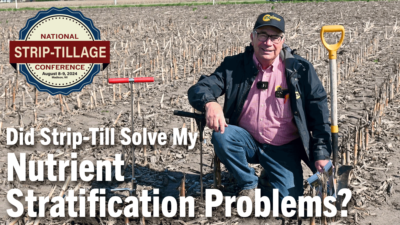



Post a comment
Report Abusive Comment